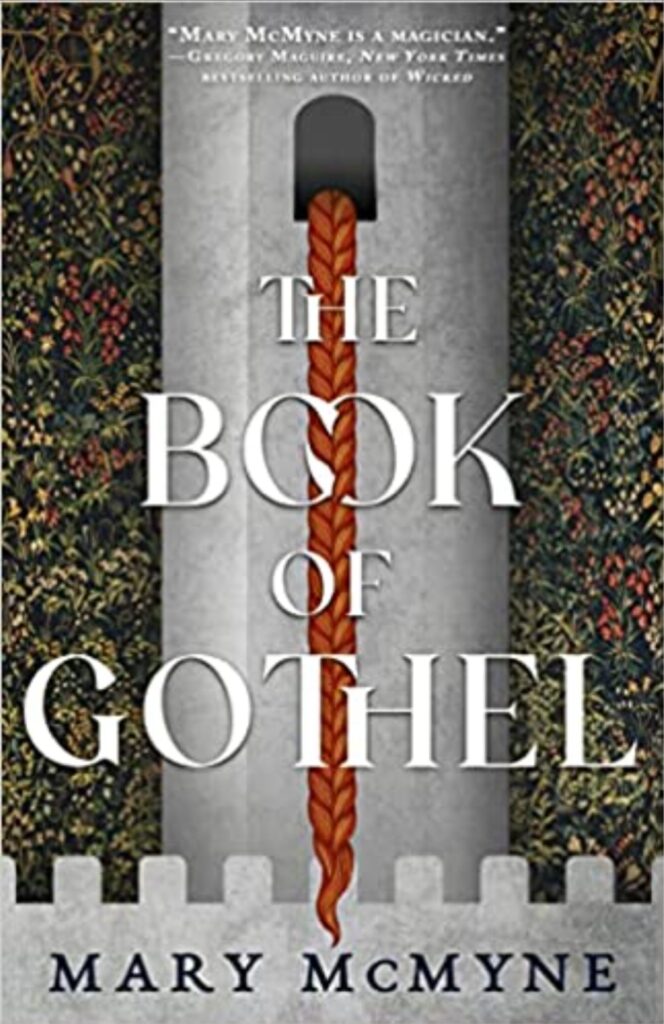Being a kid at heart, I’ve always loved fairy tales. But “modern” fairy tales? Let’s see.
Stephen King’s novels have always been fantastical — and usually on the grim side. His latest, “Fairy Tale,” is both. But if you know the history of fairy tales, you know they were originally quite violent and grisly. And “violent and grisly” fits Stephen King’s works to a “T.”
This is a sorta kinda retelling of “Jack and the Beanstalk” or “Jack the Giant-Killer,” set in the near-past in a small town in the Midwest.
The narrator is Charlie Reade, 17, a not-quite-typical boy. King starts us out with a long — very long — introduction to Charlie’s life that serves to explain why Charlie is such a nice kid, in that he’s had to endure the loss of his mother and had to take care of his drunken father, so he’s become a responsible young man. But the fact that this part — which really doesn’t have much to do with the fairy tale part — is so long doesn’t matter; it’s Stephen King, who weaves a “net” and pulls in the reader from the start with his seductive writing. He always writes long because it’s the details that build the believability.
One day when Charlie hears a dog’s “desolate howls,” he follows the sound and finds an old man who has fallen outside his house. Charlie calls an ambulance and takes care of the dog and, later, the old curmudgeon, Mr. Bowditch. It is as he gets to know the old man that the story really starts.
Mr. Bowditch has secrets — wonderful, terrifying secrets — and eventually he’s going to entrust them to Charlie. First, there’s the secret of where he got all his money. Then, he admits he isn’t who he said he is. And, most importantly, the shed beside his house (“Don’t go in there,” Mr. Bowditch warns him) is a portal to another world, a land of magic and evil and, since it’s King, violence and grotesquery.
Charlie goes through the portal: “I felt like a helium balloon bobbing along above my own body, … then it passed. … I had left Sentry’s Rest behind. And Illinois. And America. I was in the Other. … I looked to the far horizon and saw the skyline of a great city. Daylight reflected hazily from its highest towers, as if they were made of glass. GREEN glass. … I knew an Emerald City when I saw one.”
When he discovers he may be able to save the dog’s life if he takes him into that other world, Charlie must become a giant-killer, defeating monsters and all manner of unpleasant phenomena.
There’s a bit of mystery, which may or may not be related to the magical realm. It’s a quest, a coming-of-age, boy-and-his-dog adventure. (You’re going to love this dog.) King brings in several familiar fairy tale themes along with the ugly monsters and scary beasts. He even refers to the fantasy work of other writers, such as Ray Bradbury.
It’s a long book — 600 pages (well, it’s Stephen King) – but King’s mesmerizing writing keeps you going.

“The Book of Gothel” by Mary McMyne is a prequel/retelling of the tale of Rapunzel, told from the perspective of the “witch.”
This is the account, written in the mid-12th century, of Haelewise, the daughter of a midwife. All her life, Haelewise tells us, “I suffered fainting spells that made others fear I was possessed.”
“Rumors spread about my unnatural skill with midwifery. … I could pinpoint the exact moment when a baby was ready to be born,” she writes. “There was a secret world that shimmered behind the world we knew. I had felt it.”
When the superstitious townspeople force her to leave or be killed, she heads for the forest, looking for the wise old woman her mother told her about, the one who lives in the tower in the place called Gothel. When she finds her, the old woman hires her as an apprentice. But Haelewise is wary. “I couldn’t shake the feeling that I was escaping something bad into something worse,” she writes.
Through it all, young Haelewise has to find courage and figure things out on her own. Is the old woman giving her herbs that will help her escape her fainting spells, or is she taking away her spiritual powers? Whom can she trust? And when she witnesses a murder, she’s really in hot water.
This book is written more like our familiar fairy tales. It has an evil prince, dark magic, legends, magic herbs, and ancient wisdom. Our heroine suffers a great deal of loss and betrayal, yet she manages to save herself. She also finds a way to fit in with a secret circle of empowered women.

“The Girl Who Fell Beneath the Sea” by Axie Oh is a young-adult fantasy based on Korean folklore. It’s especially interesting from a cultural aspect, with Asian themes and images I’d never encountered before.
Young Mina tells us her story: “Every year the storms begin, and every year a girl is brought to the sea. … The myths of my people say only a true bride of the Sea God can bring an end to his insatiable wrath.” The “bride” will be sacrificed by being thrown into the sea.
This year the girl chosen to be “given to the Sea God” is Mina’s brother’s true love, Shim Cheong. To save her brother from a broken heart, Mina throws herself into the sea as the sacrifice. “Why would the Sea God take me instead of Shim Cheong? I haven’t her beauty or her elegance. I just have my own stubborn will. … I’ve chosen this. I am the maker of my own destiny.”
But instead of drowning, she finds herself in “the Spirit Realm,” another world beneath the water: “I’m no longer underwater. It’s as if I’ve woken inside the belly of a cloud.” She recounts, “The Spirit Realm is a vast and magical place, but the greatest of all its wonders is the Sea God’s city. … He is the god of gods, and ruler of them all.” Mina must work with and against good and bad entities to at last bring an end to the storms.
There’s also a bit of romance in this other-worldly adventure of mist and magic.
Happy reading!
Mary Louise Ruehr is a books columnist for The Portager. Her One for the Books column previously appeared in the Record-Courier, where she was an editor.


